USS Gerald R. Ford (CVN 78) virtual tour series, The House of Wolverine, episode 2.
ATLANTIC OCEAN
05.22.2020
Video by Petty Officer 2nd Class Ruben Reed
USS Gerald R. Ford (CVN 78)
USS Gerald R. Ford (CVN 78) virtual tour series, The House of Wolverine, episode 2.
ATLANTIC OCEAN
05.22.2020
Video by Petty Officer 2nd Class Ruben Reed
USS Gerald R. Ford (CVN 78)
Air Vice-Marshal Andrew Clark of the Royal New Zealand Air Force spoke recently to the virtual RAAF Airpower Conference on the Indo-Pacific Region. Originally, the conference was to be held in March 2020, but was postponed due to COVID-19.
But the RAAF’s Airpower Development Centre has moved ahead with a virtual conference, consisting of the core presentations which would have been given in person.
In his presentation, Air Vice-marshal Clark focuses on why pulling up the drawbridge which has been done to hold COVID-19 at bay is not the way ahead for New Zealand in the South Pacific region.
This is a maritime region, with vast distances and many small nations.
He argued that geography is an important definer for New Zealand security but that geography is being altered by forces which are not limited by geography, such as cyber and space.
He argues that the New Zealand neighborhood had many “disrupters” in play reshaping the security environment, such as climate change.

He explained that New Zealand worked a wide variety of partnerships but was fully committed to supporting a rules based order in the region.
He noted that New Zealand needed to enhance its situational awareness and reach in the region, which is leading to acquisitions in the maritime awareness and lift domains.
These priorities were highlighted in the 2019 defence capability plan for New Zealand.
Defence-Capability-Plan-2019He argued for a broader view of the “gray zone” which is the area within which New Zealand operates its forces and its relationships going forward.
His presentation can be viewed below:
Air Vice-Marshal Andrew Clark
Air Vice-Marshal Clark joined the Royal New Zealand Air Force in 1986 as a Navigator. During his flying career he has had four operational tours on P-3 Orion aircraft, as well as a tour as an instructor with the Royal Australian Air Force. His flying career has included command of an operational mission in the Middle East, and culminated with a tour as Commanding Officer of No. 5 Squadron.
Throughout his career Air Vice-Marshal Clark has held a variety of operational and strategic level staff positions. In recent years these positions have included Assistant Chief of Air Force – Strategy Management, Director of Strategic Commitments, Director of Defence Intelligence, Deputy Chief of Air Force, Assistant Chief Capability and Air Component Commander. In addition, he has served as the New Zealand Defence Adviser to India.
Air Vice-Marshal Clark completed Staff College in Australia. He has a Masters degree in Management (Defence Studies) from the University of Canberra and a Graduate Diploma in Defence Studies from the University of New South Wales.
Air Vice-Marshal Clark was appointed Chief of Air Force in September 2018.
It is clear that when either looking at the North Atlantic or the Pacific theater of operations, neither the USAF nor the USN are in a position to dominate as stove-piped services or without integrated operations with core allies.
In building out the integrated distributed force, a core challenge facing the sea and air services is how to work more effectively together, how to leverage interactive kill webs to make the right decisions at the right time to deliver the right outcome.
Discussions with the cutting edge war-fighting centers in the United States have made it clear that that this is a core priority for the sea and air services, but that it is also a work in progress.
Last Fall, the head of the RAF made a presentation at the Mitchell Institute which focused on RAF and USAF collaboration.
And this month a Forum publication was released which drew from that presentation.
The summary to the Forum piece highlighted the core points:
Based on an address he delivered during a ‘Mitchell Hour’ on October 11, 2019, Air Chief Marshal (ACM) Mike Wigston gives his appraisal of the current and future state of the RAF-USAF bilateral relationship.
After setting out the changing geostrategic context which is challenging the post-1945 rules-based international order, ACM Wigston provides his analysis of the growing state-based threats across all domains that are stalking the U.S., U.K. and their allies.
He goes on to demonstrate the enduring closeness of the two air forces’ relationship and why, in an emerging era in which multi-domain operations and information advantage will be decisive, the USAF and RAF need to redouble their partnering efforts.
He argues that ‘control of the air’ – and, increasingly, space – remains the foremost responsibility of air forces, but the U.S. and U.K. edge has been eroded in recent decades as competitor states have advanced their own capabilities.
ACM Wigston identifies the F-35 program as a vital vehicle through which to promote the collaborative ideals stated in the USAF- RAF Shared Vision Statement – not least through the close location of the RAF’s and USAFE’s F-35 bases in England – but that advancements in information exchange, logistics systems, and C2 systems are even more important.
The renaissance of the U.K.’s carrier strike capability will provide further collaborative opportunities, not least through the embarkation of USMC F-35Bs on U.K. aircraft carriers.
The intelligence, surveillance and reconnaissance (ISR) sphere provides evidence of excellent and efficient collaboration between the USAF and RAF, not least through the RC-135 Rivet Joint and MQ-9 Reaper programs. The RAF has also developed strong links with the U.S. Navy, which has paid dividends in the restoration of the RAF’s maritime patrol capability.
The RAF air chief noted later in the piece the core point about integratability:
But integration goes much further than simply being able to operate in the same piece of sky or from the same carrier deck. The real challenge is ensuring that our information systems, data links, tactics, and logistical systems are all aligned.
We have driven forward 4th and 5th generation integration through the ‘Point Blank’ series of exercises that involve RAF F-35s and Typhoons, and USAF F-15s and F-35s.
Back in July, our F-35s exercised with B-2 Spirit bombers during their deployment to RAF Fairford in England – the first international fifth-generation training of its kind. We have hot-pitted and cross-serviced visiting F-35 fighter squadrons, just like the old AMPLE GAIN exercises we conducted as NATO partners in Germany before the end of the Cold War.
Our ambition doesn’t stop there. The ability to share data and forge deeper interoperability across datalink networks has to reach the point where U.S. and
U.K. F-35s are interchangeable in a four- ship formation, where our synthetic environments are fully connected to allow relevant collective training, and where follow-on operational test and evaluation is optimized….
What can be missed is the maritime services part of all of this.
First, the RAF and the Royal Navy are operating their F-35Bs (a Marine Corps variant) as an integrated force.
Second, the RAF is shaping a core part of their extended battle space efforts around the contribution of the UK’s large deck carrier.
Third, a significant targeting contribution to the 4th Battle of the Atlantic will be delivered by the RAF in its role within the allied maritime domain enterprise, and those targets are both for air and maritime operations.
And when discussing the kill web, it is not about the service insignia on the asset, it is about the ability to craft an interactive and integrated sensor shooter enterprise.
USAF and RAF Integration.The featured photo shows an F-35B on HMS Queen Elizabeth for First of Class Flight Trials (Fixed Wing) on Oct. 10, 2018.
For an interview in 2014 with an airman involved in the UK’s airpower transition which highlights the cross-learning between the Royal Navy and the Royal Air Force, see the following:
And in a 2016 Williams Foundation Seminar, the evolution of air-sea integration with the emergence of a fifth generation force was the focus of analysis:
GULF OF THAILAND (March 4, 2020)
A CV-22 Osprey assigned to Air Force 21st Special Operations Squadron conducts flight operations aboard San Antonio-class amphibious transport dock ship USS Green Bay (LPD 20) in support of Exercise Cobra Gold 2020, March 4, 2020.
America Expeditionary Strike Group-31st Marine Expeditionary Unit is participating in Cobra Gold 20, the largest theater security cooperation exercise in the Indo-Pacific region and an integral part of the U.S. commitment to strengthen engagement in the region.
(U.S. Navy video by Mass Communication Specialist 3rd Class Maria G. Llanos)
By Robbin Laird and Ed Timperlake
We visited the USAF Warfare Center in 2015, when Major General Jay Silveria, was the commanding officer. A visit last month was postponed due to the COVID-19 impacts, but, hopefully, we can return later this year.
But we did have the opportunity to have a round table via teleconference on May 12, 2020 with the following officers: Colonel Jack Arthaud, Commandant of the USAF Weapons School (USAFWS), Lt. Col. Ethan Sabin, Commander of the 6th Weapons Squadron, and Lt. Col. James Combs, Commander of the 8th Weapons Squadron, Major Peter Mattes, Director of Operations, 19th Weapons Squadron.
We started by asking Col. Arthaud how the training approach being pursued currently differed from his earlier experiences.
“In a word, I would say integration. Clearly, what has evolved is a much more challenging and complex air warfare environment. We have shifted from a primary focus on training to execute de-conflicted operations or parallel operations, to higher levels of teaming, higher levels of group coherency and integration, because that’s what the threat demands.
“When I was a student in 2006, the 22-week course spent 20 and half weeks on individual weapon systems expertise with the remainder on collaboration. Our way of war then was focused on de-conflicted air warfare or sequential air operations, As an F-15C operator we would focus on doing our air sweep and then there would be follow up strike packages and then a wide variety of support assets in the air operation.
“We were not an integrated weapons school but we added a number of elements, such as the Mobility Weapons School, and a full complement of air, space, cyber and special operations platforms, all resident in the Weapons School today which facilitate training for integrated force packaging.
“And with the shift to deepen integration, our integration phase of training is now six of the 22 weeks versus to the week and a half I went through as a student 15 years ago.
“With this has come a shift in the skill-sets we prioritize and develop. What it means to be credible has changed over the last 15 years.
“At that time, being credible really meant being the best fighter pilot in your aircraft or being the best tactical C2 controller, as examples. And now what we’ve seen is that there’s a need for leadership of the integrated force.
“There’s an increased need for critical thinking and problem solving. There’s a need to understand the capabilities of your platform in depth — not only so you can optimize the employment of your own platform, but so you can understand how best to combine your platform with others, to best to accomplish the functions and tasks that are necessary to solve the tactical problems facing the integrated force.”
The Colonel provided a very clear differentiation between then and now, and in the discussion which followed we discussed a number of key aspects of the approach being shaped now in close interaction with the other warfare centers which are operating in relative close proximity, namely, USN NAWDC, and the USMC MAWTS-1.
In fact, officers are embedded from each of these centers within each other’s centers as well.
What we will do for the rest of this article is to highlight some key takeaways from the discussion, with some extrapolations from those takeaways along the way as well,
The first takeaway is that clearly the services are working dynamic problem-solving approaches.
They are dealing with evolving adversary capabilities and approaches, and the services clearly are not assuming that they “know” in advance what will be experienced the battlespace.
The warfighting centers are cross-learning with regard to anticipated threats, tactics and challenges rather than coming up with single service solution sets.
A very different training regimen is required for force integration to shape a force designed almost on the fly to operate against an evolving threat environment.
At Nellis, they are focusing on effects-based training where the focus is upon problem solving to achieve a specific effect required for specific tactical operational settings.
As one officer put it: “We’re trying to train our weapons officers, our instructors, and our operational Air Force officers to be able to adapt effectively in a period of uncertainty or in a fight with more uncertain terms.
“I think that we need to be prepared for some technological surprises that might occur and we need to train to that reality.”
The officer added: “We don’t know for sure exactly what we might see, but let’s go ahead and make some reasonable guesses about what a difficult task or problem might be, and then let’s allow our instructors and our students to innovate and try to go solve that forward-looking tactical problem.”
The second takeaway is that the USAF is clearly leveraging what fifth generation capabilities can provide for the joint force.
During our 2015 visit, the first F-35 for the Weapons School had just arrived and Major General Silveria had recently become the first USAF general officer to complete qualification training in the F-35.
Now with the three services each operating the jet, they are working the significant integration opportunities which flying the same aircraft provides across the force, but remembering that the USAF has forty years of experience in flying low observable aircraft, a legacy experience which provides certainly a leg up on global adversaries, if leveraged properly in the training and operational arenas.
The third takeaway is clearly that the team is thinking in kill web terms, or in terms of an integrated, distributed force.
They are working closely with the US Navy in terms of shaping how distributed maritime operations can come together most effectively with the USAF’s evolving airpower distributed operations capabilities as well.
And with the USMC able to shape a very flexible mobile basing capability on the kill web chessboard, shaping ways to maximize the capabilities the individual services bring to the fight but to do so through interactive sensor webs to shape effective distributed strike is an evolving focus for force integration.
And for distributed operations to work effectively, one of the challenges is finding ways to enhance C2 capabilities at the tactical edge and resident in mobile bases to support the overall integrated force.
The fourth takeaway is that the objective is clearly to have greater capability to operate through what is be labelled the advanced battle management system.
But in many ways, the force is already doing so through the capabilities already fielded and being shaped on the training ranges. One officer referred to ABMS as the available battle management systems which is a good way to differentiate between the training for the fight, we are in now versus a world in 2030.
“The best way I would characterize how C2 has changed in the last decade is less vertical orientation and more horizontal feeders out there in order to create our own web of information sharing with what I term the current ABMS, which is the available battle management system.”
The fifth takeaway is how training for distributed integrated operations is yielding innovative ways to operate which have strategic consequences.
Too often it is assumed inside the beltway that operations and tactics are on a level distinctly different from the strategic level, thereby easily missing the kinds of innovations going on at Nellis and its sister warfighting training centers.
The kind of kill web integration which is being shaped now and with the addition of new capabilities in the near and midterm has a strategic consequence.
For example, the challenges China presents to the United States and our allies in the Pacific requires that air and maritime domains partner well.
Working to shape how to partner effectively at the tactical level in a kill web approach allows the United States and its Allies to keep the Chinese off balance and not allow them to prepare for a one attack vector.
They have to be prepared for a much wider variety of potential dilemmas that we could throw at them.
For example, the US Navy and USAF are working closely together in the electronic warfare domain. The approach is to leverage the relevant platforms to provide for a variety of capabilities which can be used to degrade the enemy’s C2 or air defenses.
Training to integrate the platforms to achieve a wider range of attack envelopes to complicate the adversary’s calculations is tactical training with a strategic impact.
And this area is clearly a growth area given the enhanced importance of digital systems to the combat force, both Blue and Red.
The sixth takeaway which is clearly kill web related is the significant change over the past decade with regard not just to sensors but the ability to move sensor data around more rapidly in the battlespace to allow for more effective decision making at the tactical edge.
Obviously, this is a key driver changing both the capabilities to integrate platforms, but also how to command task forces operating in integrated rather than sequential manner.
The shift from hierarchical C2 to empowering tactical decision making at the edge is clearly a significant part of the change as well for the training world.
How best to empower rapid decision making at the tactical edge but ensure more effective strategic decision making with regard to how to manage the battle, and how to best determine which targets are prioritized?
Notably, in the Pacific there are three nuclear powers.
Nuclear deterrence is woven throughout any considerations of conventional operations, so there is a clear need to add a strategic overlay of the battlespace, which considers potential consequences and focuses on making the right target decisions in a fluid battlespace.
In short, what we heard from the USAF officers was, not surprisingly, highly congruent from what was learned from discussions at Norfolk, Virginia earlier this year in a discuss with three senior admirals with regard to the shift in training.
“The synergy across the training enterprise is at the heart of being able to deliver the integrated distributed force as a core warfighting capability to deal with evolving 21st century threats.
“There are a number of key drivers of change as well which we discussed.
“One key driver is the evolution of technology to allow for better capabilities to make decisions at the tactical edge.
“A second is the challenge of speed, or the need to operate effectively in a combat environment in which combat speed is a key aspect, as opposed to slo mo war evidenced in the land wars.
“How to shape con-ops that master C2 at the tactical edge, and rapid decision making in a fluid but high-speed combat environment?
“In a way, what we were discussing is a shift from training preparing for the next fight with relatively high confidence that the next one was symmetric with what we know to be a shift to proactive training.
“How to shape the skill sets for the fight which is evolving in terms of technologies and concepts of operations for both Red and Blue?
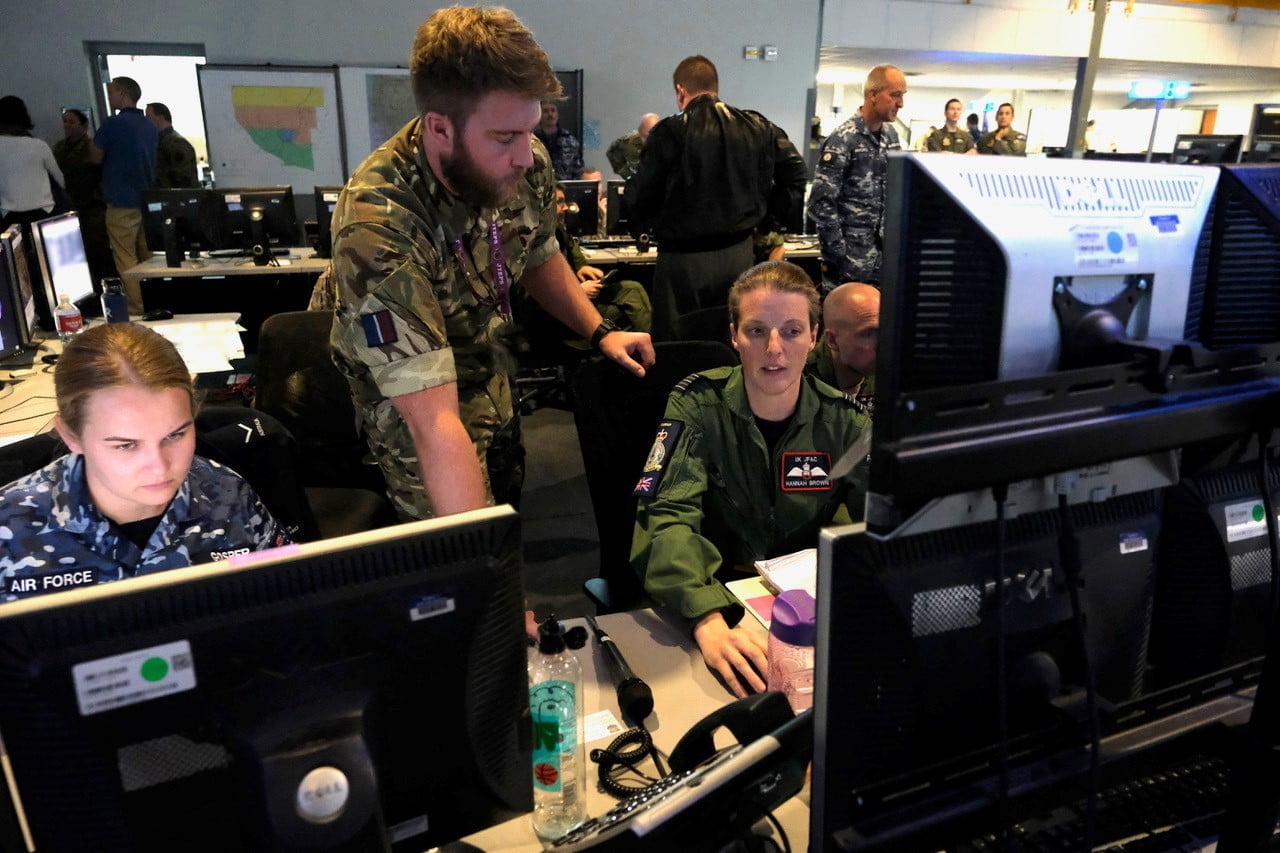

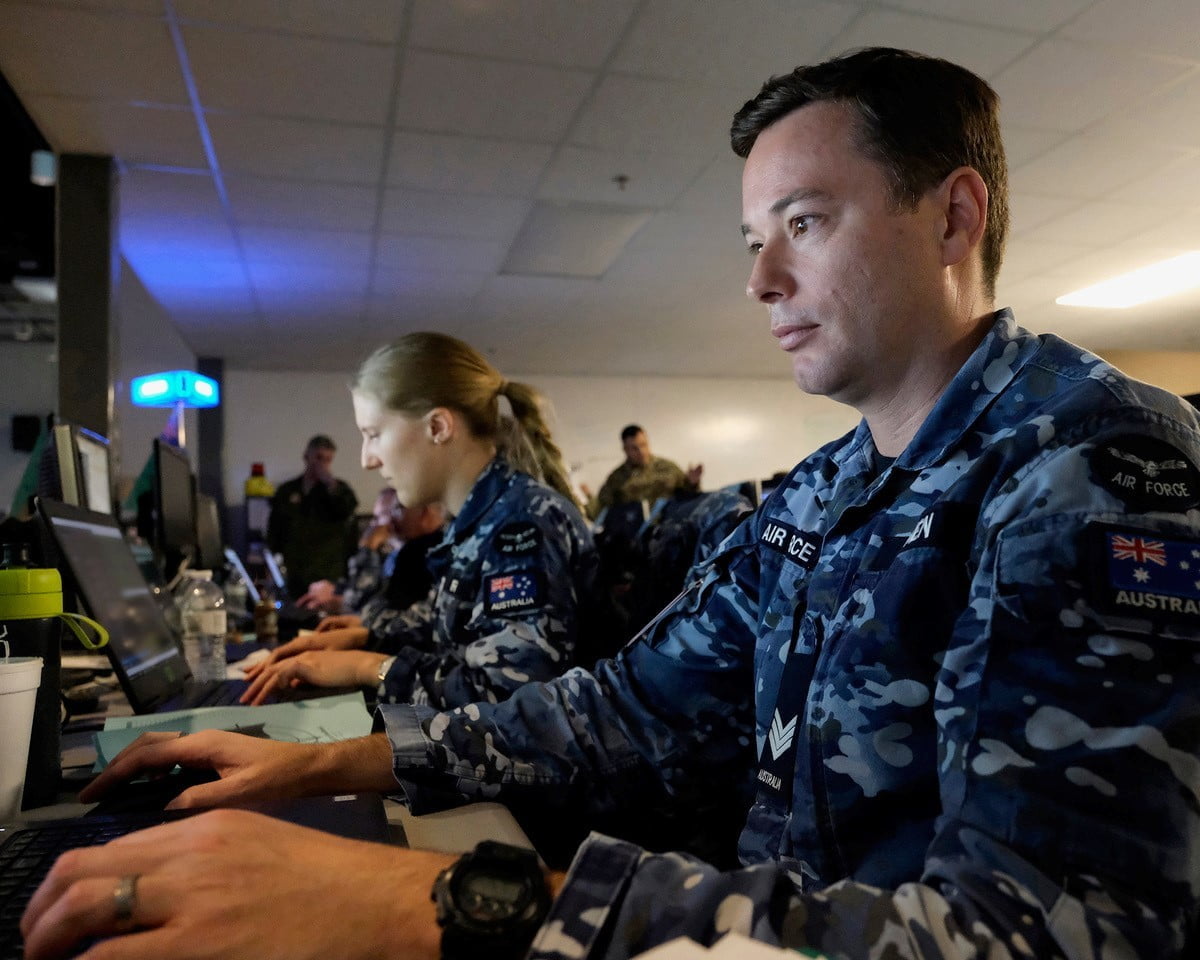
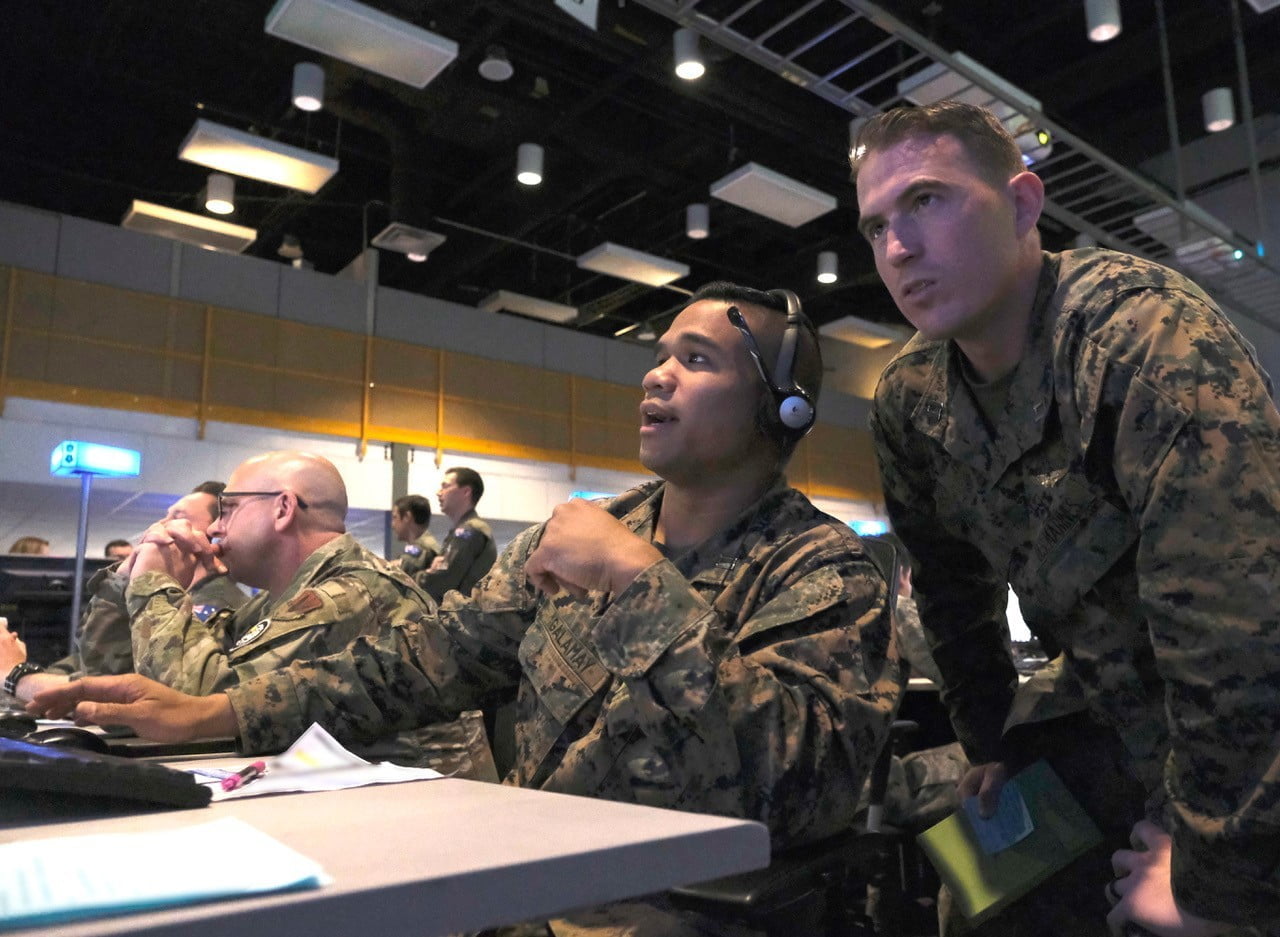
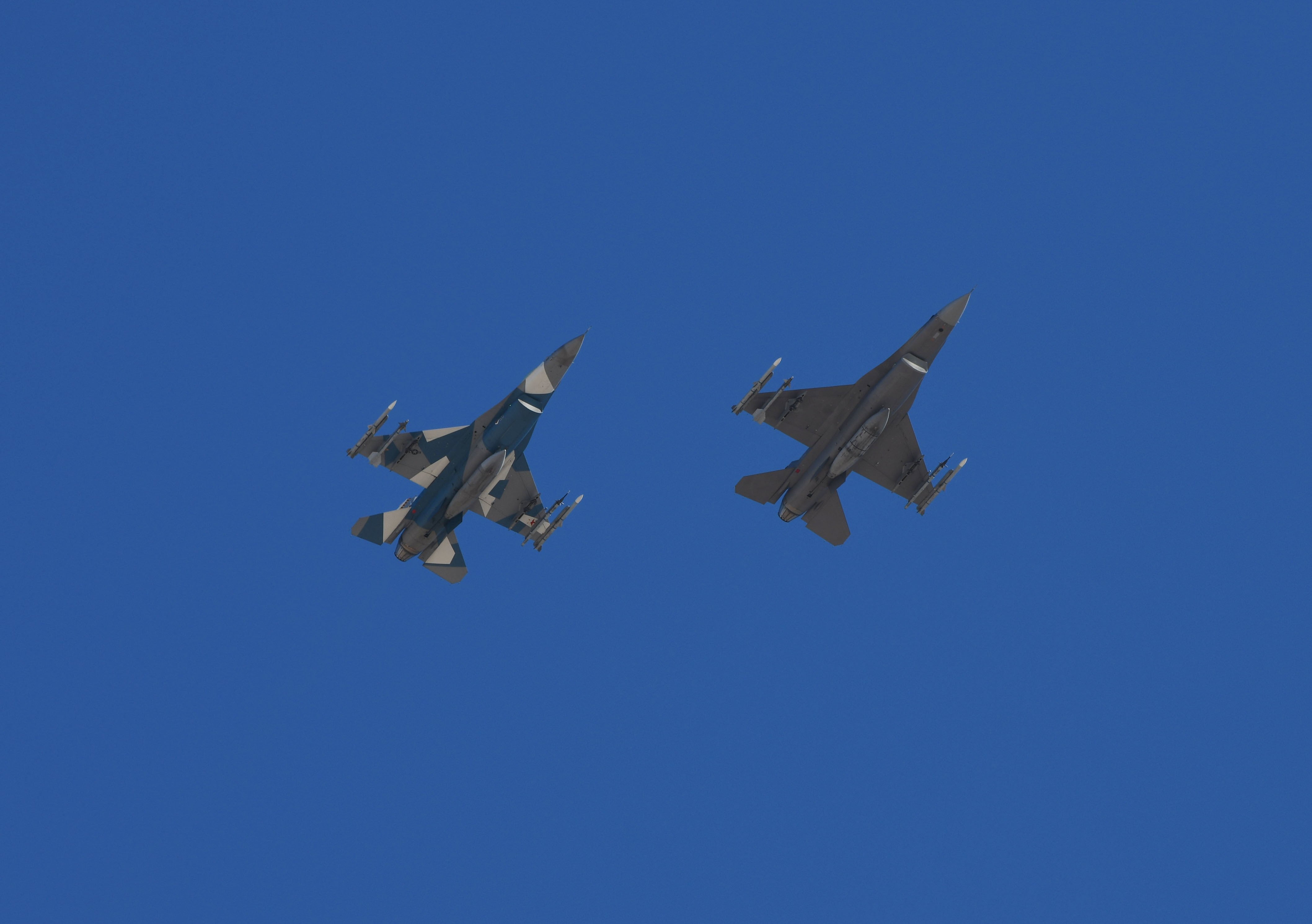
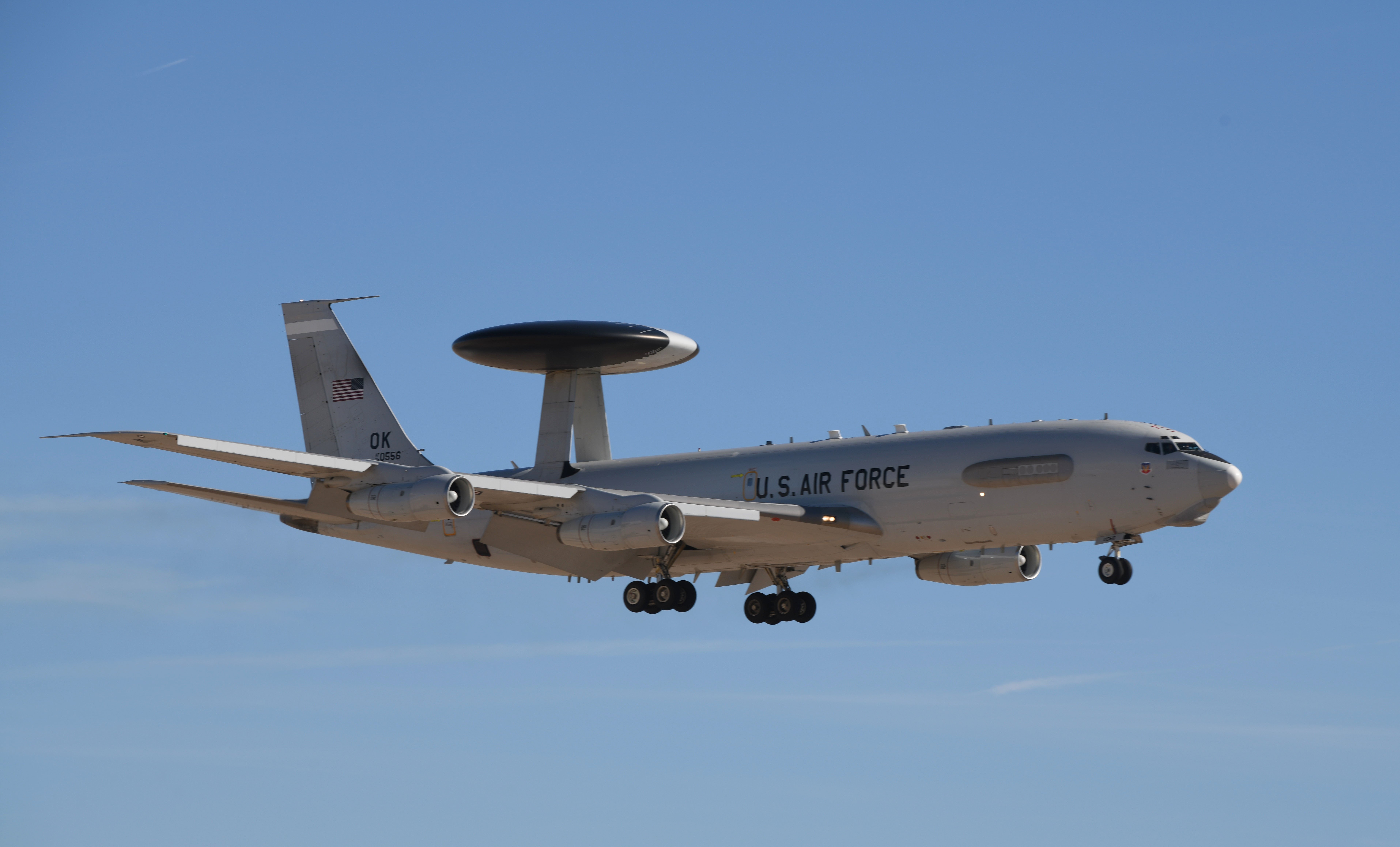
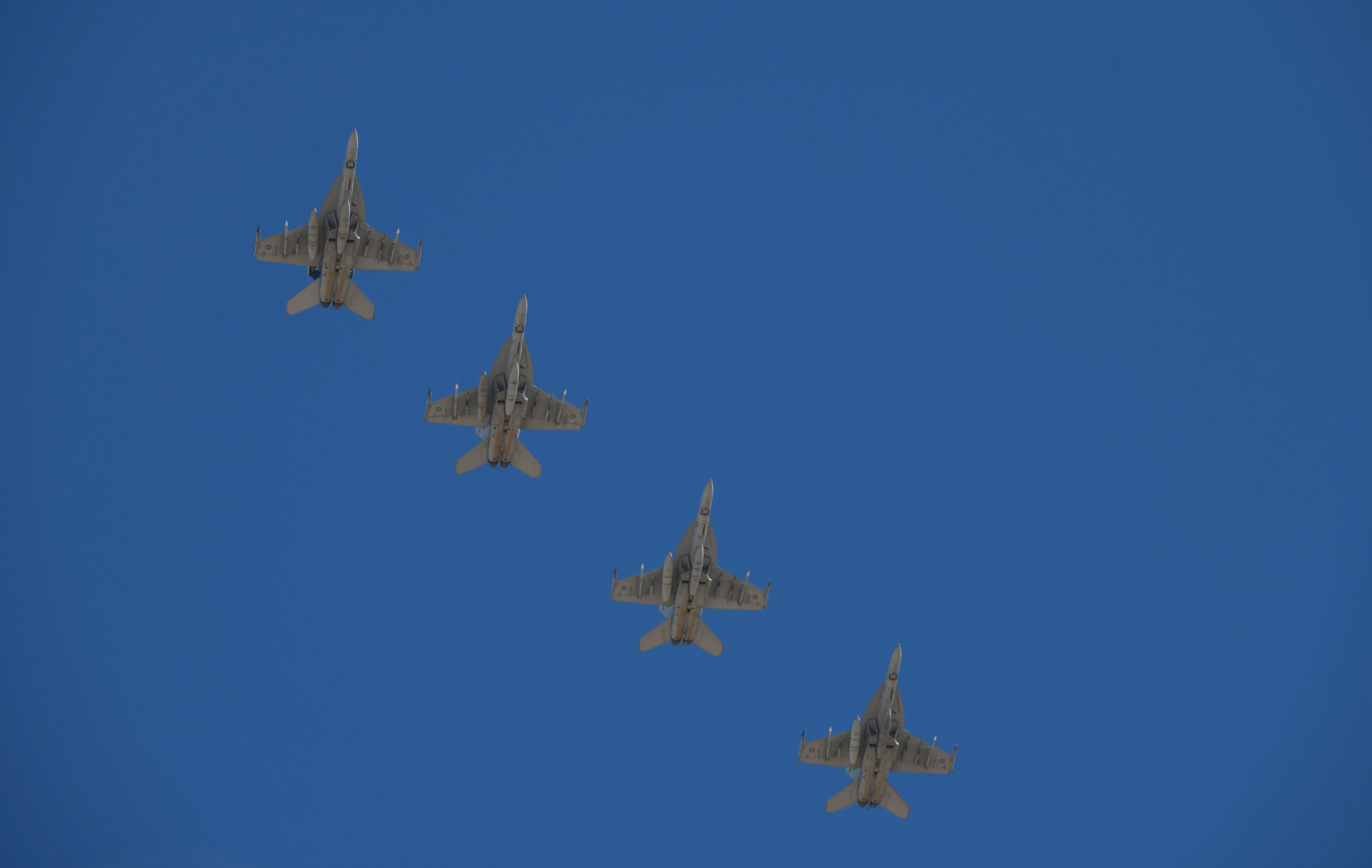
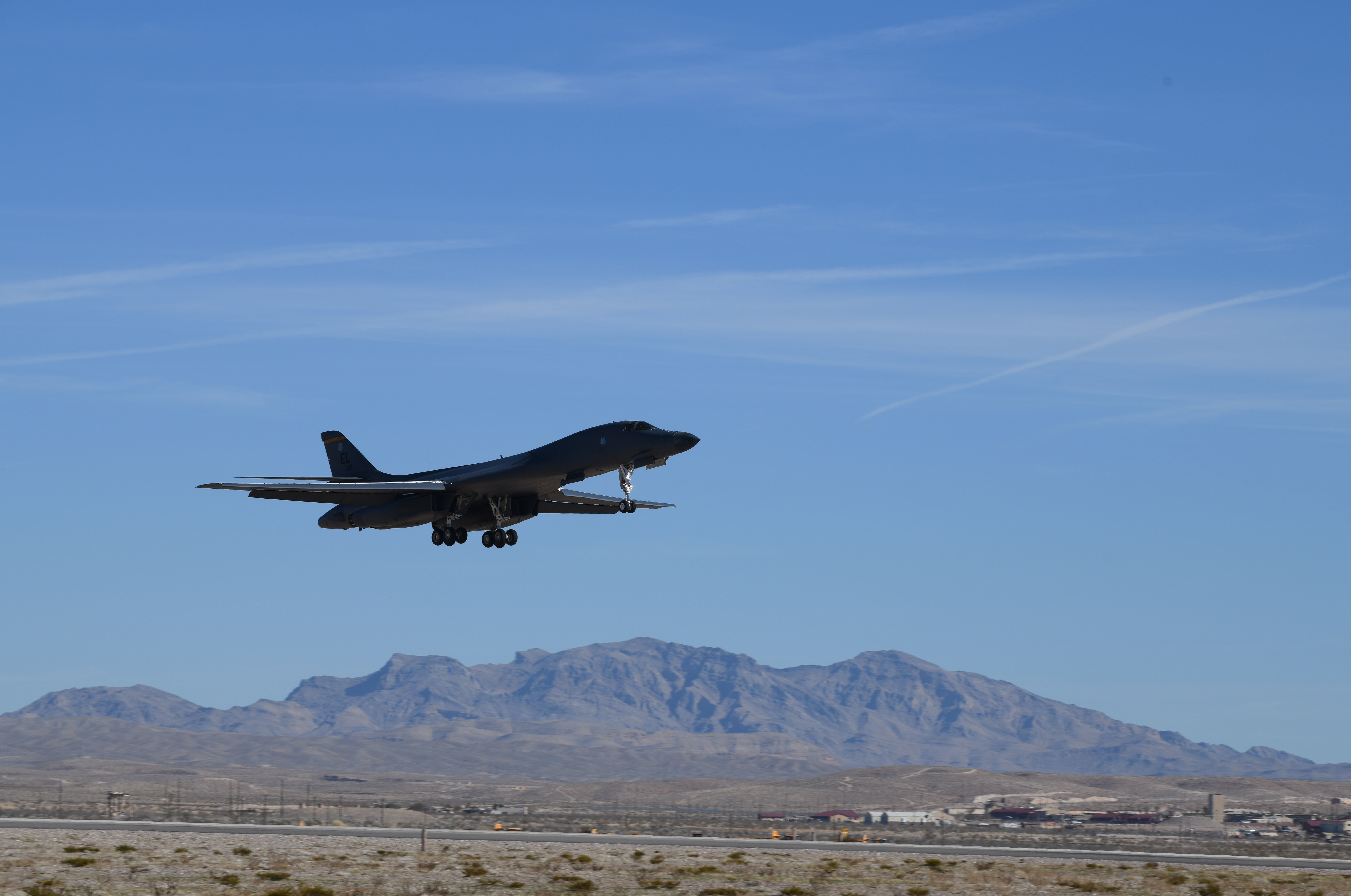
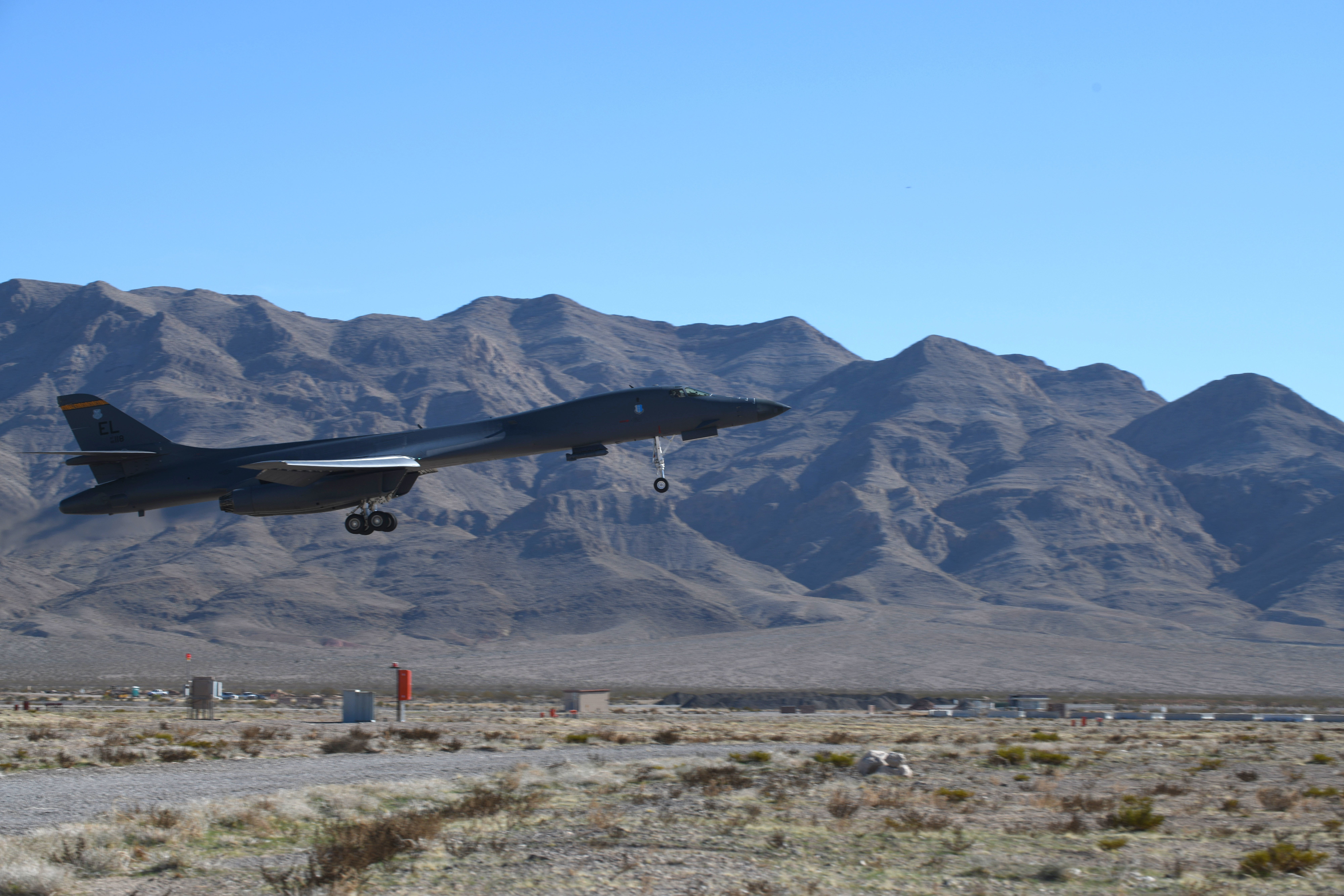
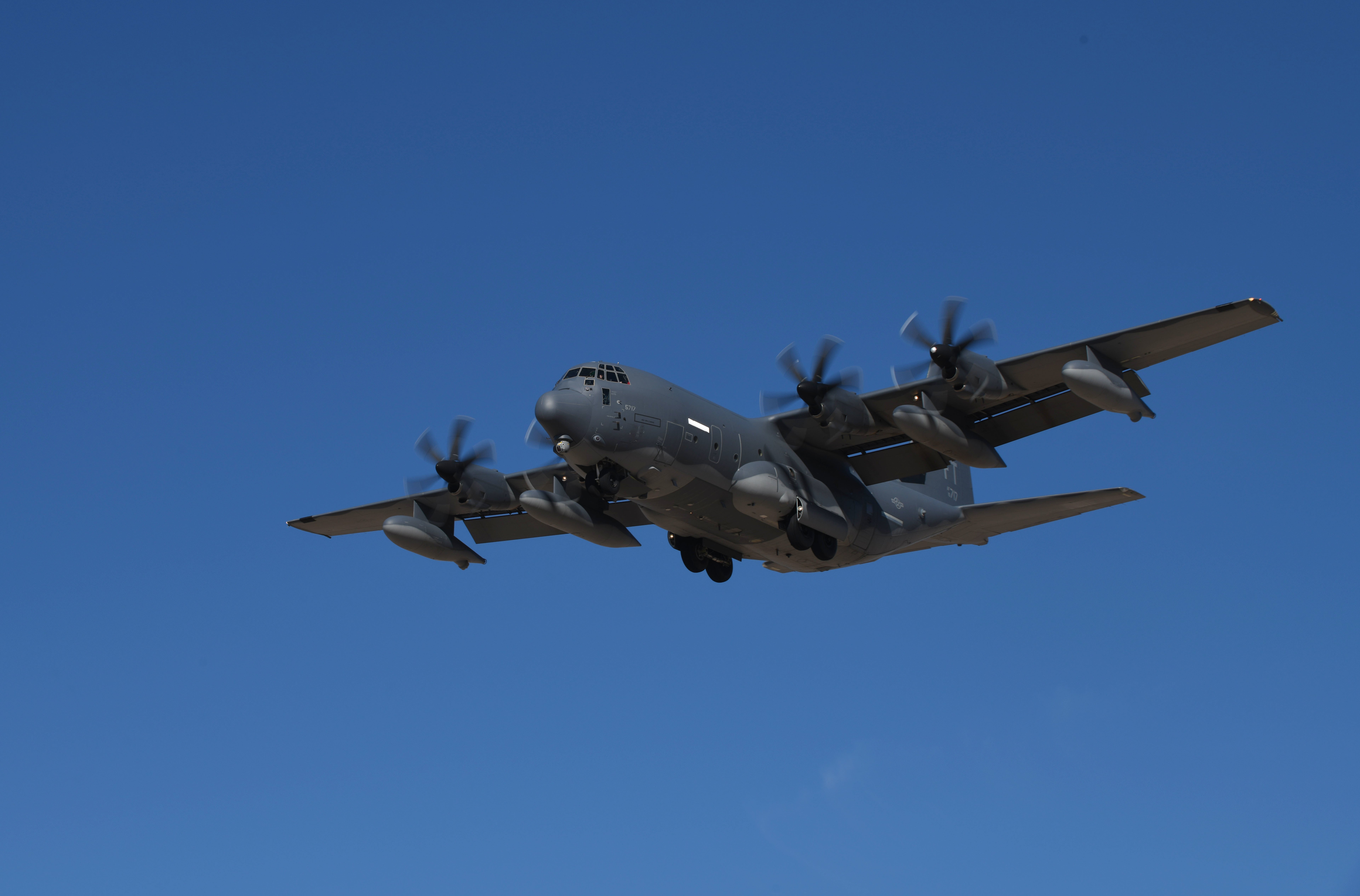
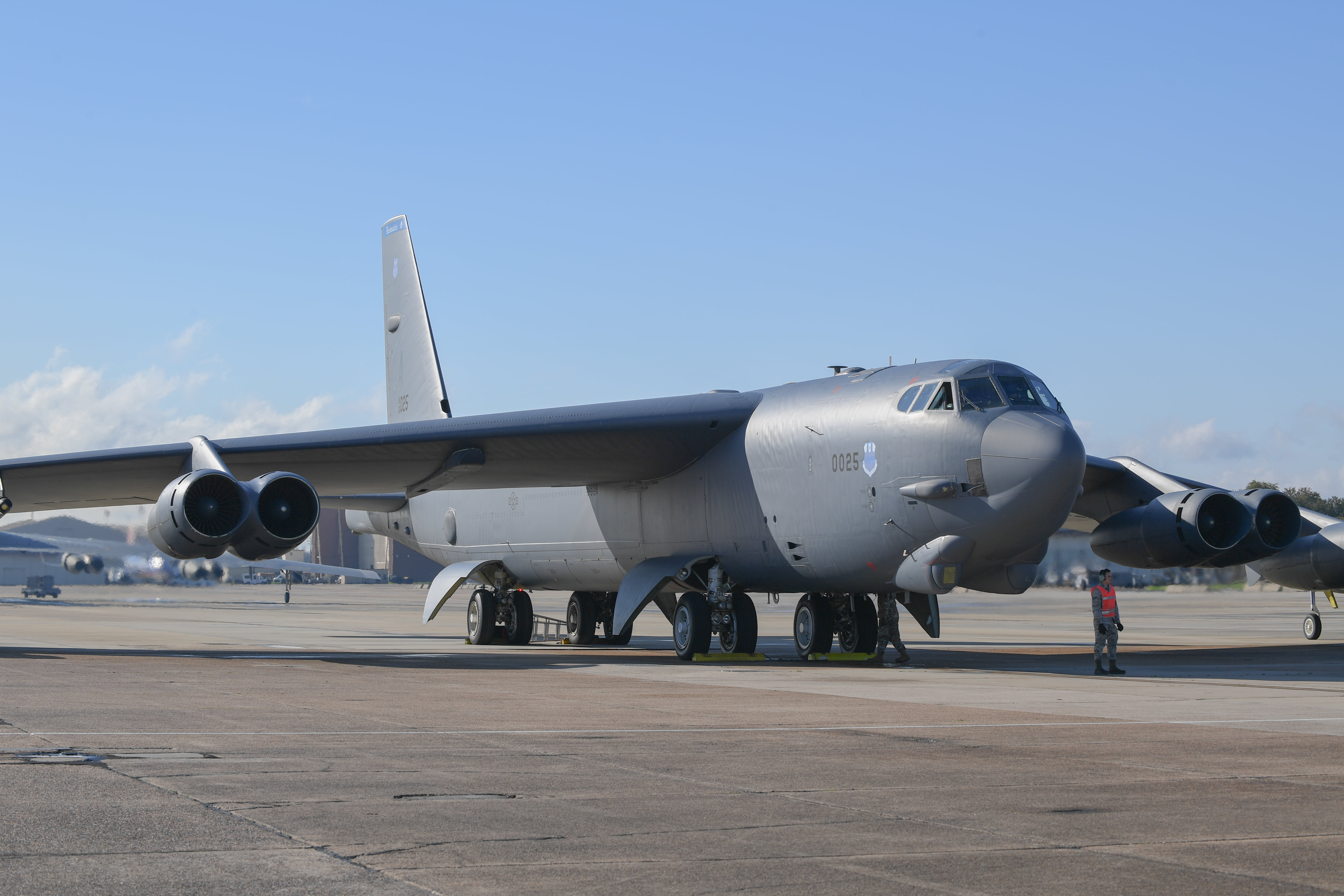

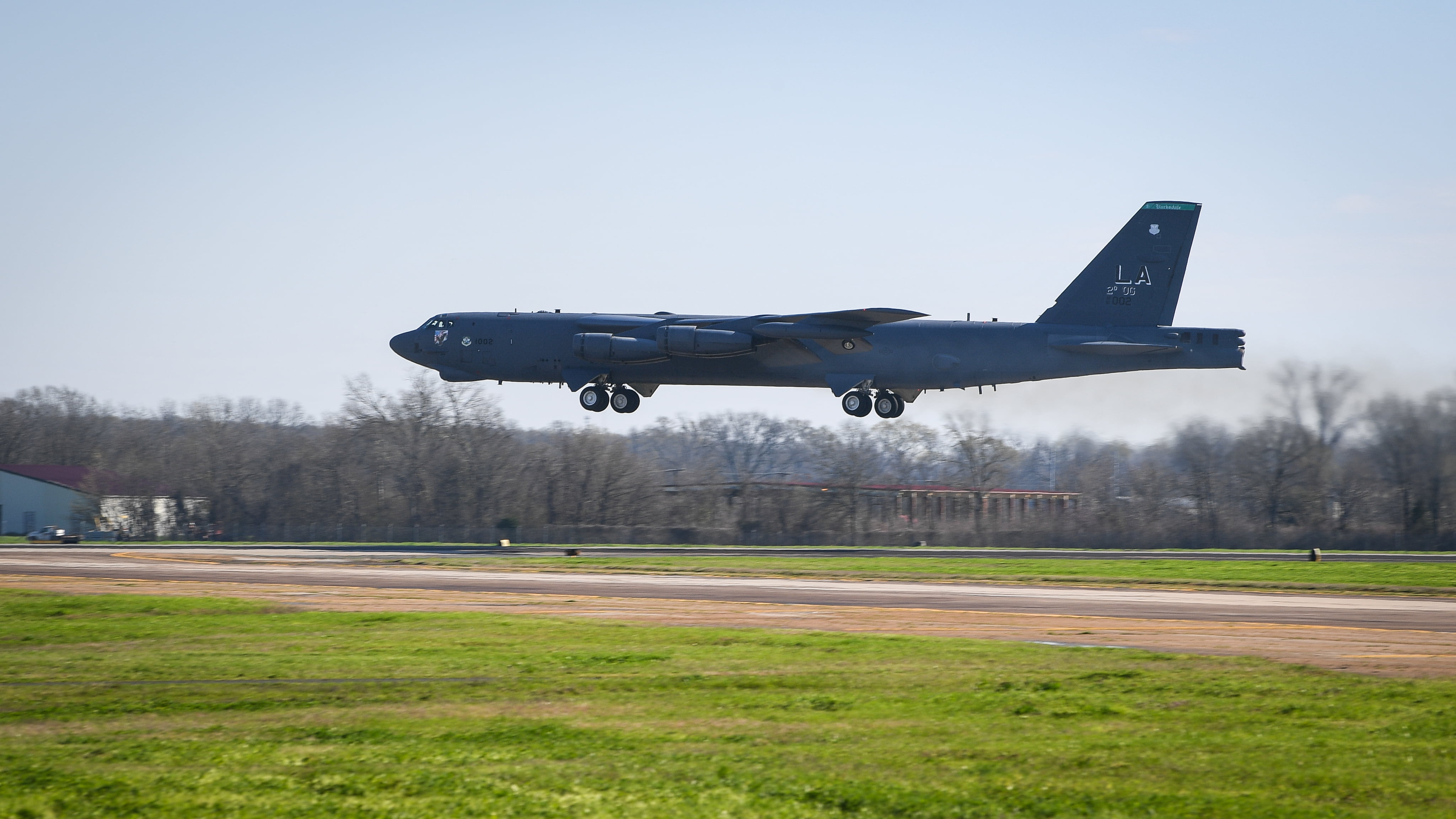
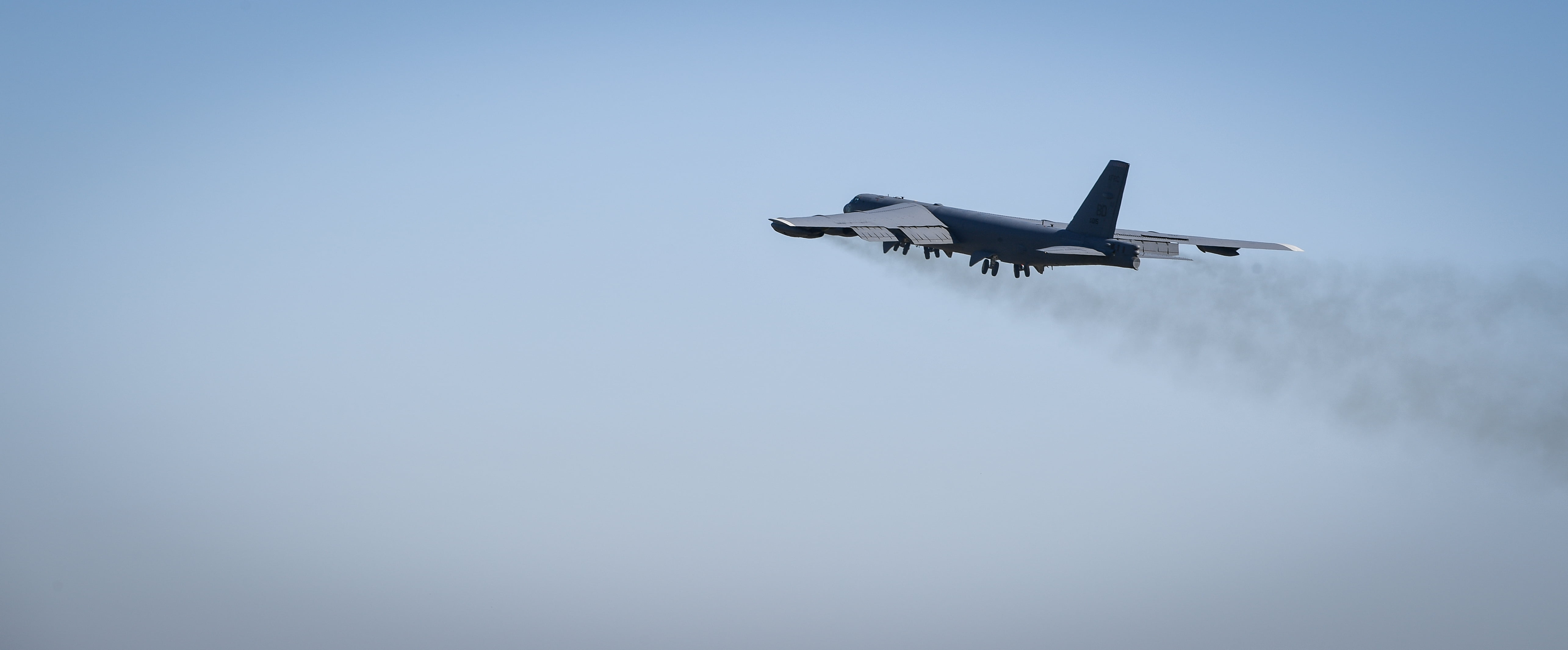
by defenceWeb
Russia has started production of Su-35 fighter jets for Egypt as part of an order for two dozen of the jets.
This is according to TASS, which reported over the weekend that the Gagarin Aircraft Plant in Komsomolsk-on-Amur has launched the production of the Su-35s for Russia that were ordered in 2018.
“The timeframe for first batch’s delivery to the Egyptian side has not been set yet, due to restrictions imposed by the novel coronavirus outbreak,” a military diplomatic source told TASS.
According to the Stockholm International Peace Research Institute, Egypt ordered 24 Su-35 aircraft for $2 billion in 2018.
In March 2019 Russian newspaper Kommersant said the contract involves several dozen of the fighters, which will supplement the MiG-29M/M2 fighters Egypt is receiving and help replace obsolete MiG-21s and J-7s.
Kommersant said deliveries are due to take place from 2020/2021. Egypt’s order was apparently spurred on by the performance of the aircraft over Syria, where it was deployed by the Russian Air Force.
Both China and Indonesia have ordered Su-35s, with China receiving its last batch in late 2018. Indonesia has ordered 11 of the type and China 24.
The Su-35 is one of the latest evolutions of the Su-27 ‘Flanker’ and first flew in February 2008, after which it was put in production for the Russian Air Force – service entry was in 2014. Compared to its predecessors, the Su-35 features new avionics including the Irbis phased array radar with a range of 400 km and more powerful AL-41F1S engines (14 500 kg of thrust) with thrust vectoring control.
The aircraft has a maximum takeoff weight of 34 500 kg and a maximum range of 3 600 km on internal fuel. Payload is 8 tonnes on 12 hardpoints in addition to a single GSh-30-1 30 mm cannon. The Su-35 can deploy air-to-air missiles of up to 300 kilometre range, and can carry the heavy Oniks anti-ship cruise missile, as well as a multitude of air-to-ground weaponry.
Over the last decade, Egypt has taken delivery of large amounts of hardware from Russia. According to the Stockholm International Peace Research Institute, this includes Tor-M1 (SA-15), Igla-S (SA-24), S-300VM (Antey-2500/SA-23) and Buk-M2 (SA-17) surface-to-air missile systems, ten Mi-17V-5 helicopters and a Project 1241/Tarantual fast attack craft as well as air-to-air and anti-tank guided missiles. Egypt is also receiving 46 Ka-52K attack helicopters and 50 MiG-29M/M2 fighter jets from Russian manufacturers.
This article was published by defenceWeb on May 19, 2020.
By Robbin Laird
The US Navy has deployed Triton to Guam and has begun its operational history.
According to an article on USNI News by Gidget Fuentes published on May 12, 2020, a pair of MQ-4C Tritons operating from Guam has been integrated into fleet operations and provide reach across the Indo-Pacific.
“The Navy is counting on the Triton, which can operate at greater than 50,000-foot altitudes and at the 2,000-mile-plus range, to provide an unmanned platform for persistent, maritime intelligence, surveillance, and reconnaissance capabilities and work alongside its manned fleet of reconnaissance and surveillance patrol aircraft.
“The Tritons with Unmanned Patrol Squadron 19 – the Navy’s first unmanned aircraft squadron – arrived in Guam in late January to support CTF-72, which oversees the patrol, reconnaissance and surveillance force in the U.S. 7th Fleet region.”
But what exactly does the Triton provide for the interactive kill webs which shape evolving maritime combat capability?
One answer was provided in the Fuentes article:
“The Triton can fly for more than 24-hours at a time, at altitudes higher than 10 miles, with an operational range of 8,200 nautical miles, according to manufacturer North Grumman. The Navy’s program of record would field 68 aircraft.”
An additional answer focuses on what the sensors onboard the aircraft can provide.
According to an article by Andrew McLaughlin published by Australian Defence Business Review:
“The high-flying Triton can stay aloft for 28 hours and features advanced optical, radar and electronic sensors.
“It will complement the manned P-8A Poseidon, and replace the EP-3E electronic intelligence (ELINT) aircraft in US service. On Guam, the aircraft are currently under the command of the Commander of Task Force (CTF) 72.”
These qualities of the platform are obviously important contributions but because the US Navy along with its sister services have moved beyond the platform centric kill chain to shaping interactive webs to guide the strike force, the key question then becomes somewhat different.
What capabilities does the Triton bring to the crisis management and combat environments, and how does it work interactively within the spider webs which make up the kill web enabled force?
A significant part of the answer rests in the recent interview which I did with Rear Admiral Peter Garvin, head of the U.S. Navy’s Maritime Patrol enterprise.
From the outset, the US Navy’s work with industry has focused on building, operating and supporting a dyad to deliver the common operational picture driving the next round of anti-submarine warfare and maritime domain awareness.
This P-8 dyad with Triton delivers a new capability for the fleet.
This is manned-unmanned teaming being put into practice today, not in some distant combat future.
According to Rear Admiral Garvin: “We are taking full advantage of the leap forward in many sensors and communications technology to interoperate in ways that were previously impossible.
“Faced with a resurgent and challenging ASW threat, we have not given up on the old tool sets, but we are adding to them and weaving them into a new approach.
“We are clearly shifting from linear or sequential operational thinking into a broader understanding and implementation of a web of capabilities.
“In the past, when operating a P-3, you operated alone, you had to be the sensor and the shooter. To be clear, it remains necessary that every P-8 aircraft and crew be ready and able to complete the kill chain organically, but the fact of the matter is that is not the way it always has to be, nor is it the way that we’re planning for it to have to be going forward.
“On any given mission, the P-8 could be the sensor and perhaps the allied submarine is the shooter. Or vice versa. Or maybe the destroyer is the one that happens to get the targeting solution and the helicopter is the one that actually drops the weapon.
“Sensor, shooter, communications node, or perhaps several at once, but each platform is all part of a kill web.”
Another part of the answer comes from the follow-on interview which I had with Rear Admiral Garvin where we discussed how the dyad interacting with allies was a game changer in terms of building out a much larger canvas upon which the interactive kill webs could operate.
“We started with a discussion of the reach of the maritime patrol enterprise by focusing on a way to conceptualize the way ahead for shaping an integrated distributed force. If one conceptualizes the battlespace as layers of visuals placed one on the other, it becomes clear what is different in terms of leveraging the combat force within an interactive web.
“The first layer would be the operational geography of the battlespace.
“The second layer would be the threat elements most relevant to the blue force.
“The third layer in the case of a maritime patrol enterprise would be commercial maritime shipping traffic. Unlike air traffic, maritime traffic is very diverse, very large, and provides a key masking function for any adversary.
“The fourth layer would be the laydown of blue assets, including the geographic distribution of allied forces in the region or area of interest. The fifth layer would then be where the P-8 / Triton dyad operates.
“With such a schematic, it is quickly evident that if the U.S. Navy’s P-8 / Triton dyad is integratable with allied maritime patrol capabilities the reach of both the U.S. and allied interactive web capabilities is substantially enhanced.”
If we focus on what I referred to as the third layer, namely, the commercial maritime traffic, the Triton makes a unique contribution here.
With the height at which it operates, and with the sensors onboard, including the AIS tracking system, it provides a significant capability to prioritize those aspects of the maritime domain which need to be prioritized.
This is a major contribution even before we get to the question of what various specialized sensors can provide for other aspects of the maritime battlespace is enhanced by the connectivity built into the platform as well, in terms of an ability to deliver data over various wave forms.
As one Naval officer put it, the way to think about the maritime battlespace as the U.S. Navy evolves its capabilities is an ability to deliver a variety of kill webs which interactively can deliver domain situational awareness dominance.
This means in effect that C2 is moving in an interactive fashion in two directions – C2 at the tactical edge and C2 at the numbered fleet level to dynamically structure and task evolving task forces.
Another way to understand how the Triton contributes uniquely to the evolving kill web approach is an aspect of its unique networking capabilities.
According to Rob Zmarzlak, chief engineer, Triton program, Northrop Grumman: “The platform with its wave forms can reach back to the intelligence community and to the tactical users independently. We can send information to both the fleet and to the intelligence community.”
In the discussion with Zmarzlak, he highlighted the importance of focus on how the Triton operates as well as a key way to understand its contribution to the maritime kill web.
This part of the discussion then got at the most overlooked impact of Triton on the evolution of air-maritime forces (do not forget how important Triton will become to targeting in the Pacific for the USAF as it engages in maritime strike operations as well).
For full value to be derived from the Triton fleet, a kill web mentality will have to replace what has been a sortie generation mentality for the carrier fleet.
It is about building in an orbit-enabled concept of operations, rather than thinking of the aircraft in sortie-generation concepts of operations.
What this means is that for the Navy to get full value out of its Triton force it needs to think significantly beyond a dyad approach.
It means embracing what a high altitude remotely piloted vehicle with a sensor package which can help build a common operational picture generated by orbits can provide for a kill web strike force, which may well operate within a sortie-generated concept of operations, which the orbiting high altitude asset will provide.
With a four ship 24/7 coverage of the area where you will operate or wish to operate, the Triton can provide domain knowledge crucial to informing both the threat and opportunity calculus in an area of operations.
And because the orbit is not about sorting into a specific area, one can sort through where the best advantages might lie for the projection of force without tipping your hand by having to fly to a specific tactical area.
This is a work in progress, but it is a new capability which if fully embraced provides significant warfighting advantages to the United States and its allies.
But for those advantages to be realized, appropriate training, and operational approaches need to be shaped, executed and evolved over time.
In an article by Sam LaGrone of USNI News published on April 10, 2018, “the pair of 131-ft wingspan UAVs built by Northrop Grumman for intelligence, surveillance and reconnaissance missions will deploy with an early set of capabilities designed for maritime ISR and will grow to include a signals intelligence function in 2021, Triton program manager Capt. Dan Mackin said in a briefing at the Navy League’s Sea Air Space 2018 exposition.”
“Part of the IOC process will include adding a top secret “multi-intelligence” function to1 Triton that will eventually replace the Navy’s Lockheed Martin EP-3E Aries II manned signals intelligence platforms. Congress mandated the Navy retire the EP-3E Aries II only after it had found a way to field a similar capability.
“Eventually, the Triton program will consist of five four-aircraft orbits around the world. The operators will reside in the two main bases at Mayport and Whidbey Island.
“The system is made up of an aircraft and a main operating base where the warfighter starts taking that data over wideband SATCOM link you start assimilating that data, put that data together to understand the [maritime picture],” Mackin said.
“The Navy will have five operating bases where the aircraft will be maintained, launched and recovered. The forward bases will be at Naval Air Station Sigonella, Italy; an unspecified location in the Middle East; Naval Air Station Guam; Mayport; and Point Mugu.”
In that article, there was a snapshot of a NAVAIR representation of the envisaged Orbit engagement of the Triton.
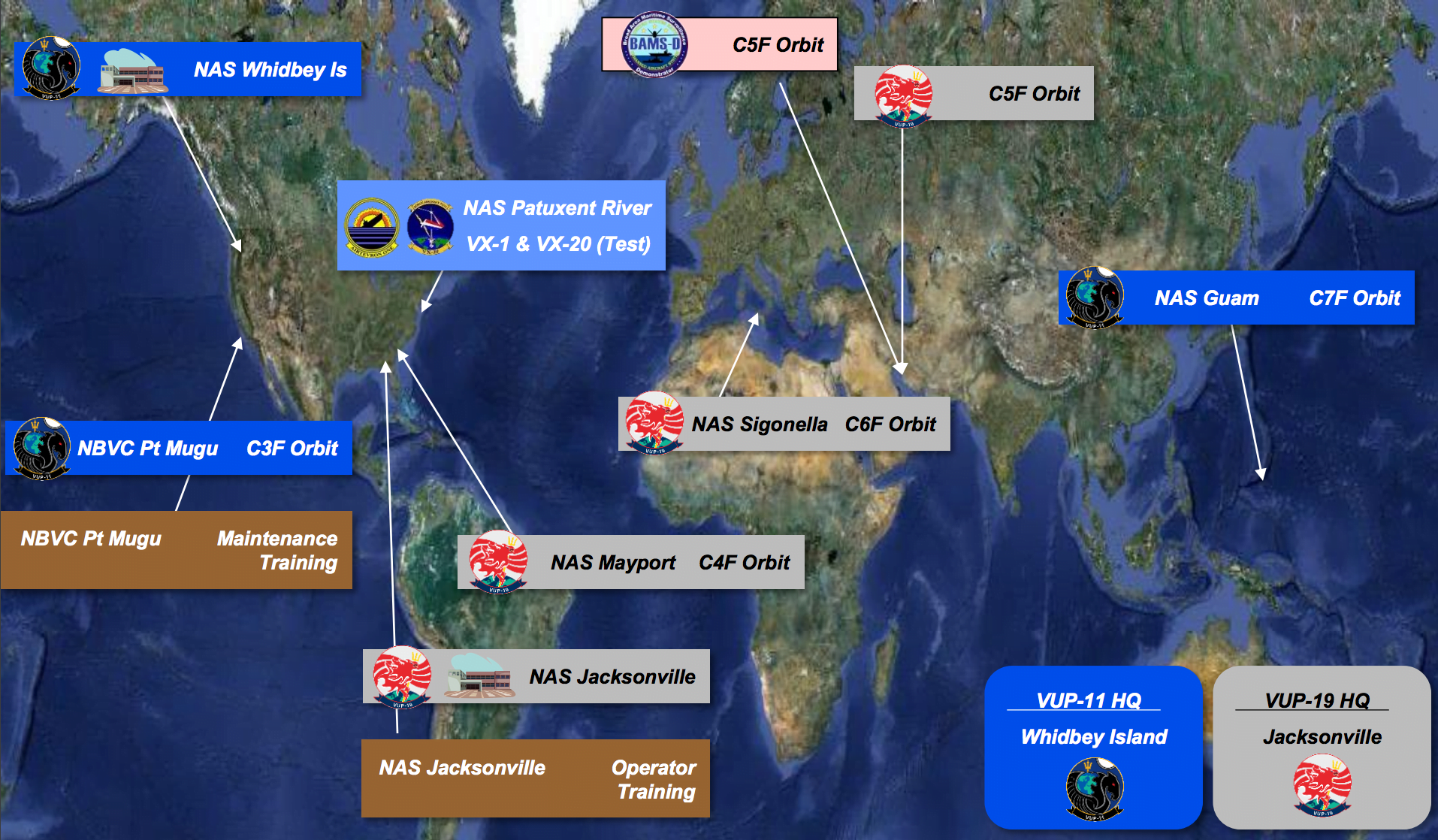
In short, one cannot describe Triton simply in platform terms, which would miss a lot because it was designed from the ground up to be part of a wider force construct.
It can be described in terms of how it works interactively with its brother, the P-8, to empower ASW operations. It can also be described in terms of its transformational qualities by grasping how orbit CONOPS contribute to shaping the maritime kill web.
Bottom-line: Triton provides a key way ahead for enhanced crisis management and combat capabilities for the joint and coalition force.
Featured Image: Navy MQ-4C Triton taxis at Andersen Air Force Base on April 29, 2020. US Navy Photo
Triton_By_The_Numbers
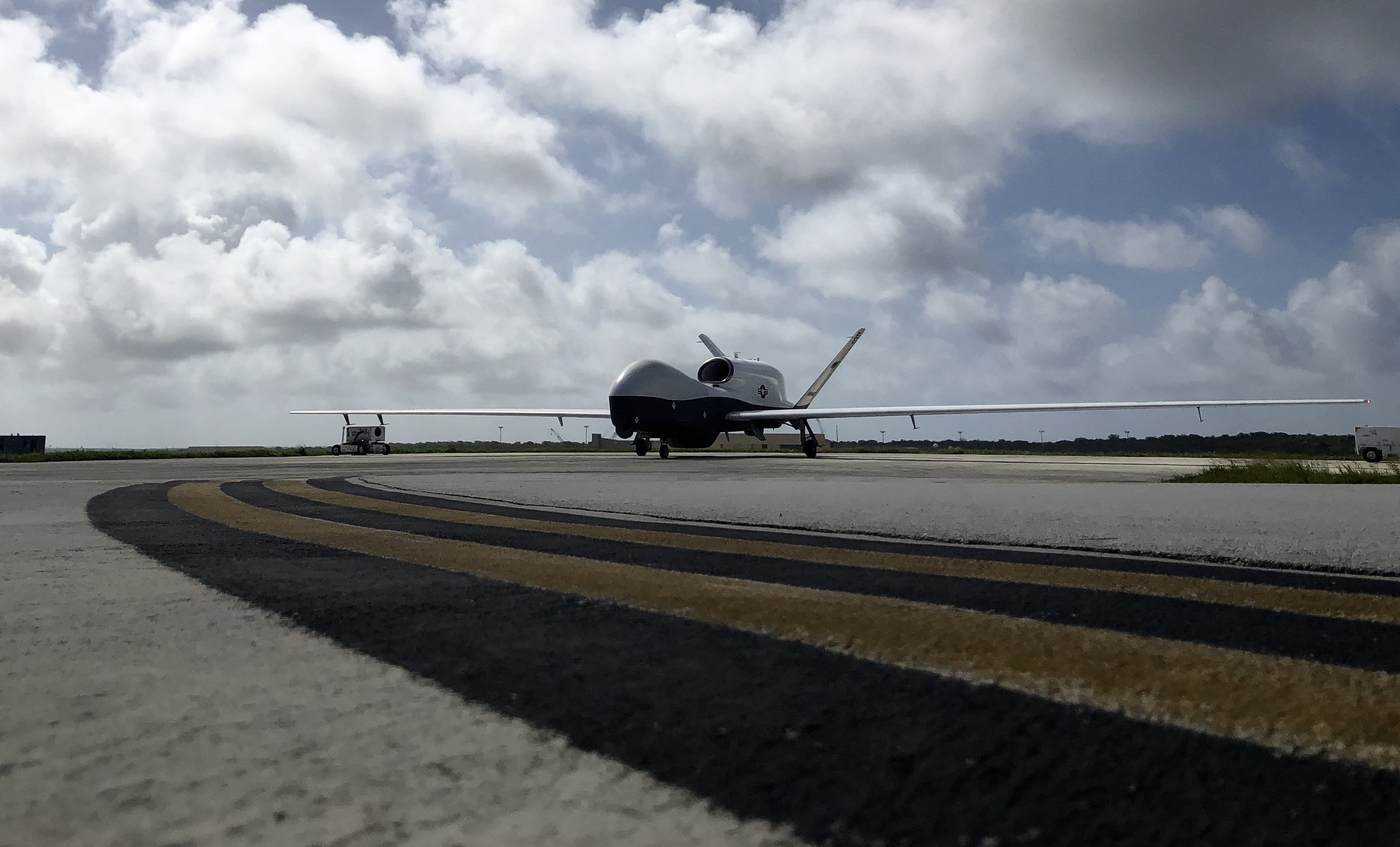

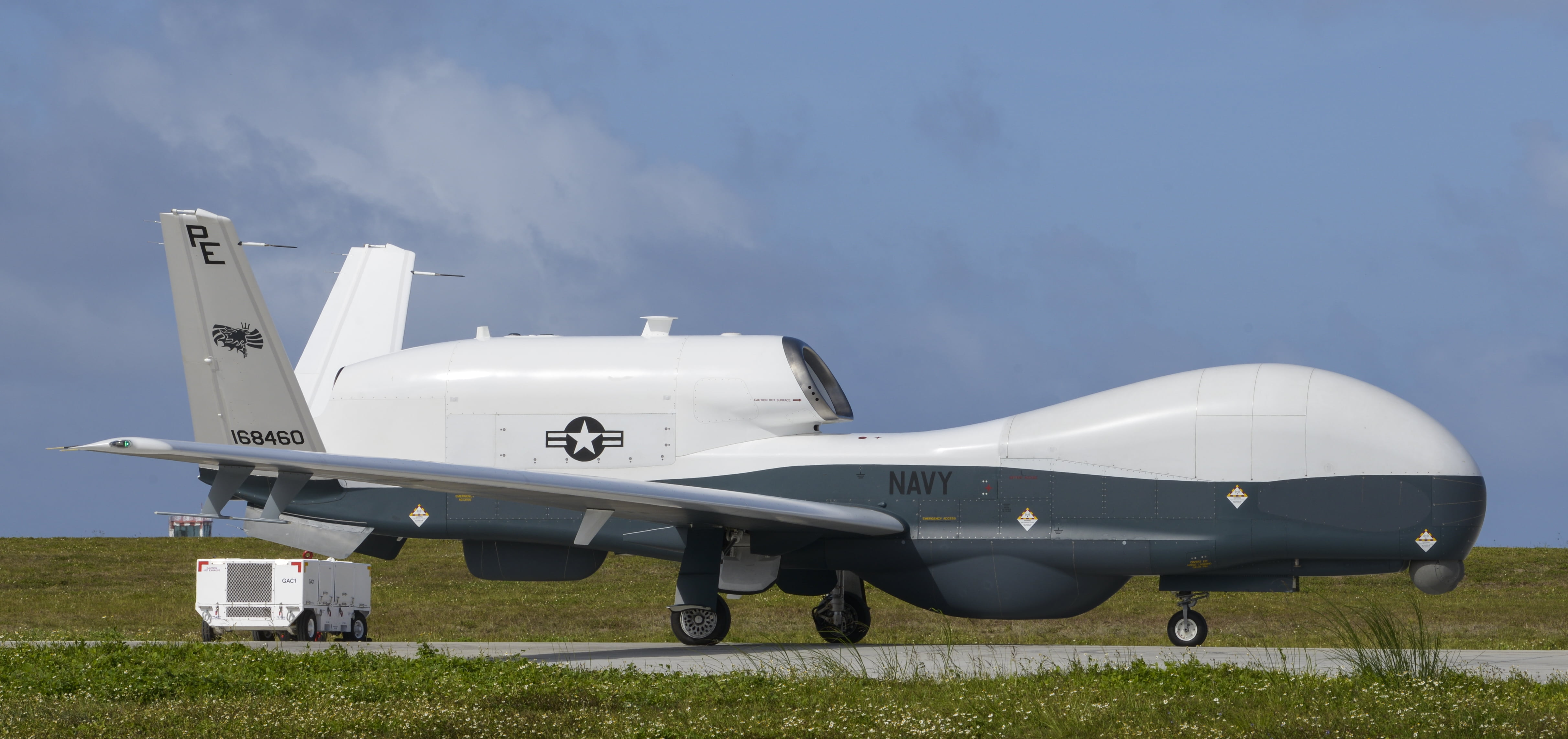
U.S. Northern Command Exercise Arctic Edge 20 conducted ground operations at the Donnelly drop zone at Ft. Greely, AK, Feb. 29, 2020.
Arctic Edge 2020 is a North American Aerospace Defense Command & U.S. Northern Command exercise scheduled every two years.
The exercise focuses on training, experimentation, techniques, tactics, and procedures development for Homeland Defense operations in an Arctic environment. Arctic Edge 20 provides opportunities to validate Arctic capabilities.
02.29.2020
Video by Staff Sgt. Diana Cossaboom
4th Combat Camera Squadron